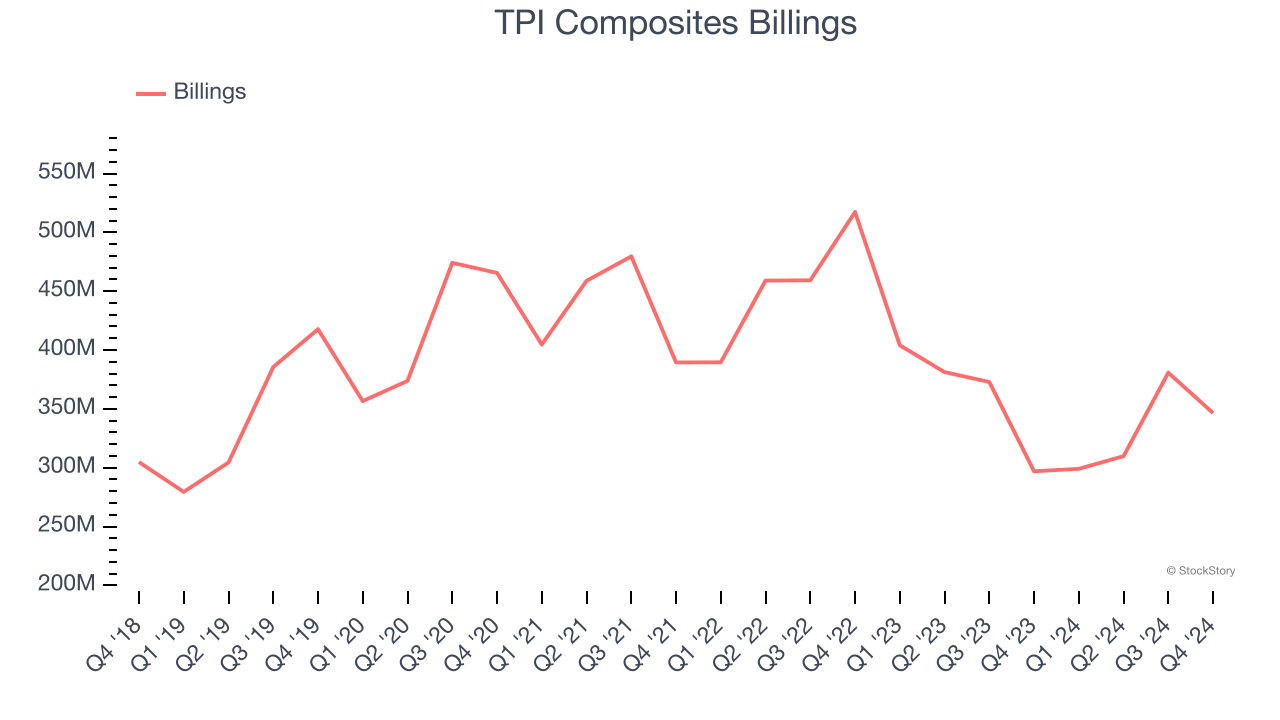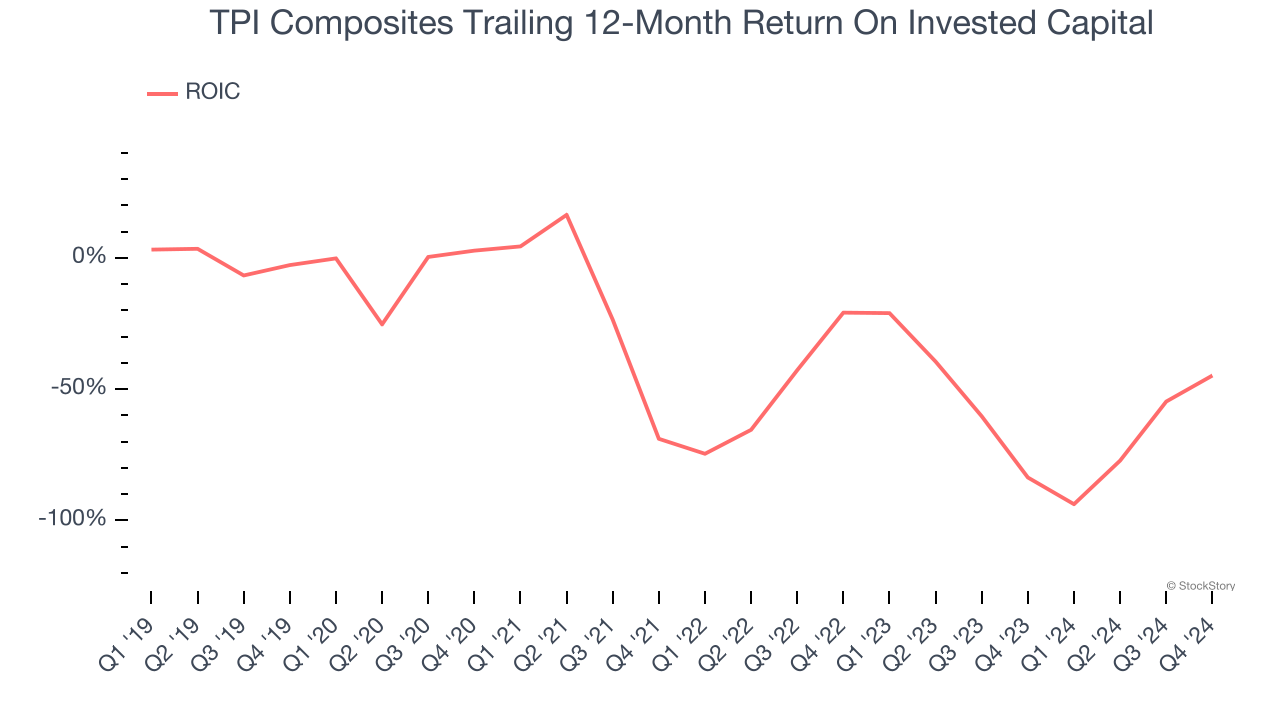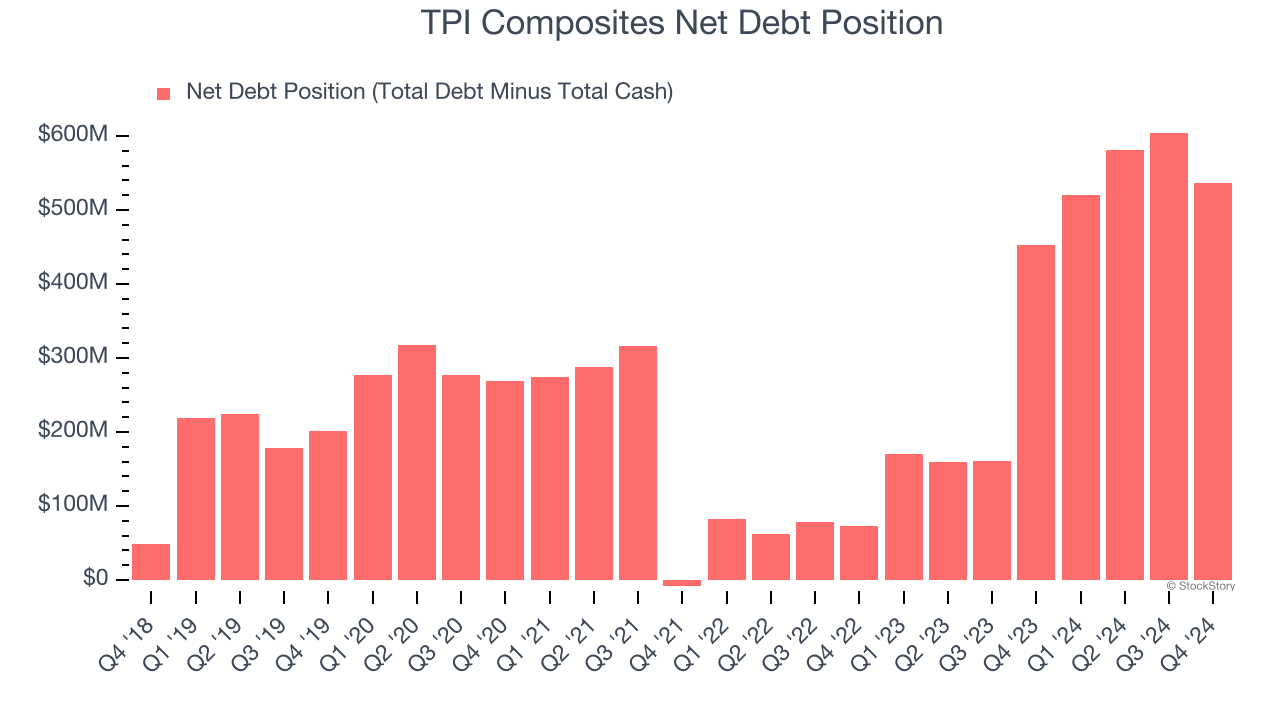
Shareholders of TPI Composites would probably like to forget the past six months even happened. The stock dropped 82.6% and now trades at $0.79. This was partly driven by its softer quarterly results and may have investors wondering how to approach the situation.
Is now the time to buy TPI Composites, or should you be careful about including it in your portfolio? Get the full stock story straight from our expert analysts, it’s free.
Even with the cheaper entry price, we're sitting this one out for now. Here are three reasons why we avoid TPIC and a stock we'd rather own.
Why Do We Think TPI Composites Will Underperform?
Founded in 1968, TPI Composites (NASDAQ:TPIC) manufactures composite wind turbine blades and provides related precision molding and assembly systems.
1. Declining Billings Reflect Product and Sales Weakness
Billings is a non-GAAP metric that sheds light on TPI Composites’s demand characteristics. This metric is often called “cash revenue” because it shows how much money the company has collected from customers in a certain period - different from reported revenue, which must be recognized in pieces over the length of a contract.
TPI Composites’s billings came in at $346.5 million in the latest quarter, and it averaged 12.6% year-on-year declines over the last two years. This performance was underwhelming and shows the company faced challenges in acquiring and retaining customers due to increasing competition. It also suggests it may need to improve to its products, pricing, or go-to-market strategy. 
2. New Investments Fail to Bear Fruit as ROIC Declines
ROIC, or return on invested capital, is a metric showing how much operating profit a company generates relative to the money it has raised (debt and equity).
We like to invest in businesses with high returns, but the trend in a company’s ROIC is what often surprises the market and moves the stock price. Over the last few years, TPI Composites’s ROIC has unfortunately decreased significantly. Paired with its already low returns, these declines suggest its profitable growth opportunities are few and far between.

3. Short Cash Runway Exposes Shareholders to Potential Dilution
As long-term investors, the risk we care about most is the permanent loss of capital, which can happen when a company goes bankrupt or raises money from a disadvantaged position. This is separate from short-term stock price volatility, something we are much less bothered by.
TPI Composites burned through $13.7 million of cash over the last year, and its $742.3 million of debt exceeds the $206.2 million of cash on its balance sheet. This is a deal breaker for us because indebted loss-making companies spell trouble.

Unless the TPI Composites’s fundamentals change quickly, it might find itself in a position where it must raise capital from investors to continue operating. Whether that would be favorable is unclear because dilution is a headwind for shareholder returns.
We remain cautious of TPI Composites until it generates consistent free cash flow or any of its announced financing plans materialize on its balance sheet.
Final Judgment
TPI Composites doesn’t pass our quality test. After the recent drawdown, the stock trades at 0.4× forward EV-to-EBITDA (or $0.79 per share). While this valuation is optically cheap, the potential downside is huge given its shaky fundamentals. There are superior stocks to buy right now. We’d recommend looking at our favorite semiconductor picks and shovels play.
Stocks We Like More Than TPI Composites
With rates dropping, inflation stabilizing, and the elections in the rearview mirror, all signs point to the start of a new bull run - and we’re laser-focused on finding the best stocks for this upcoming cycle.
Put yourself in the driver’s seat by checking out our Top 5 Strong Momentum Stocks for this week. This is a curated list of our High Quality stocks that have generated a market-beating return of 175% over the last five years.
Stocks that made our list in 2019 include now familiar names such as Nvidia (+2,183% between December 2019 and December 2024) as well as under-the-radar businesses like Comfort Systems (+751% five-year return). Find your next big winner with StockStory today for free.
